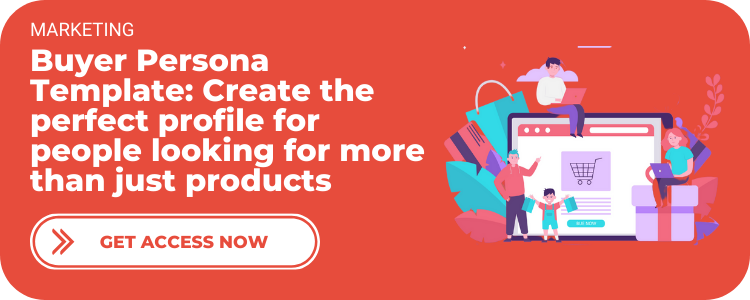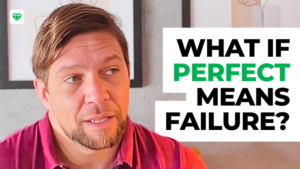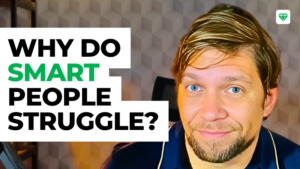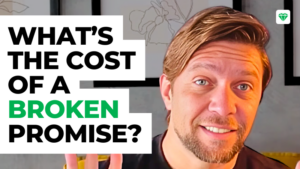Buyer Personas determine the channels and the segmentation of your message.
We can call those channels customer touchpoints because people use them to interact with your brand.
Today, we’re going to learn what are those channels and how to use them to successfully reach out to your Buyer Personas throughout the internet.
But before get into it…
Let’s dive in.
Buyer persona touch points.
In the next episode we will talk in detail about how to create buyer personas in relationship with the buyer’s journey.
But before that, we need to understand how your Content Marketing Strategy must reach out to your buyer personas before you start conceptualizing them properly.
One aspect of your Content Marketing Strategy is to create the audience’s touchpoints.
On the online marketing environment those touchpoints are everyplace online where your audience can interact with your brand.
In other words, what channels your brand will use to reach out to your buyer personas.
These channels will vary depending on your business area, but the concept is the same. You need to find your audience where they are.
The online environment provides 3 major online hubs you need to be as a brand if you want to be found by your prospects.
Each one of them are unique and with different approaches and tactics. They are:
- Social Networks.
- Streaming Networks.
- Websites.
Social Network
Starting with Social Network, imagine an offline traditional business, like a clothing store.
How does the store attract the interest of people passing by? By setting up a storefront.
That’s so fundamental that there were no stores in the last Centuries that have achieved minimum success without using a front as a Marketing Tool.
So the next question is, what do people put on those fronts? And, I think you know the answer for that, storefronts use samples of what they have inside.
Why did that work?
Because those quick demos save energy and there’s no commitment attached.
That is exactly what a Social Network is for an online business. A front.
Just imagine a clothing store with no front, no dummies wearing fashionable clothes. Just a wall and a door with a logo. Do you feel anxious about it? Like you’d never do that with your brand?
Now translate that feeling to your online business without a Social Media Marketing as part of your Content Marketing Strategy.
That’s exactly the right feeling. Something is off.
In these days, having an online brand without social network engagement is leaving money on the table.
Streaming Network
Now, moving to the streaming network which is quite the same as a social network, but it’s a kind of a special one.
Why it special? Well, because, for the first time in human history, spoken language has become timeless as written language has always been.
Streaming video apps like YouTube are making spoken language last over the lifetime span of the individuals that are speaking. That was only achievable by the written form of the message until a decade ago.
Video is transforming the internet and it’s a natural trend. Why? Because, as a species, we have more historical time listening than reading. We are prone to listen and it’s an easier and more accessible media for most people.
That also encapsulates this very media you’re listening to right now. Podcasts. Same concept.
What I’m trying to say is that every online business must be a media business, no matter what market they serve.
If you’re not streaming, you’re not leading.
Website
Last but not least, Your website. Let me tell you this right from the gecko. If you don’t have a website you have no business doing business online.
Are your entrepreneurial efforts relying on social networks and streaming networks only? If so, your business is in immediate danger.
You are at the mercy of social network brands that allow you to exist and have all the power over your brand. You are not the boss. They are.
We can talk about this for hours, but let me break this down quickly so we can move on.
Social network is rental space. You don’t own it. You can’t do what you want to do with it. You don’t make the rules. You can be kicked out at any time by the landlord.
Your website, on the other hand, is your online Real Estate. It’s owned space. You do whatever you want with it. You make the rules. You have full control of what happens there. It’s yours.
If Facebook decides to close Instagram, you’re safe. If Google changes YouTube algorithms and you lose views, you’re safe.
Because Social Network is not your business, it’s just a front of your business. Part of your Marketing Strategy, not all of it.
No website, no sustainable business. Plain and simple.
Website and the Inbound Methodology
And, when we talk about bringing prospects to your website, we must go beyond social networks and streaming networks because there’s another vital source of traffic for your website.
Search Engines. AKA: Google. More specifically, Search Engine Results Page, or simply SERP.
SERPs are so foundational to the concept of the internet itself that its fingerprint is everywhere, not only on Google. Streaming and Social Networks also use the same concept.
And what concept? You should be asking yourself. And the answer is: The Inbound Methodology.
We won’t get into details in this episode, but the Inbound Methodology is the idea of being, as a service, integrated into the natural discovery pathway of your target audience, instead of interrupting their exploration with your presence, which is traditionally known as Outbound Methodology.
So basically what brands do in the Inbound Methodology is to position themselves in a way that they can be discovered by their prospects naturally.
That is so because the internet is the first mass media that was not built to please marketers. The radio was created to place ads and the TV to show commercial breaks. All the shows you used to watch on that media were actually the breaks between ads.
That doesn’t work on the internet because the audience has full control of what they want to see. In this scenario, the best option for brands is to integrate themselves to what people are looking for and provide genuine solutions.
So, regarding your website, there’s a vital piece we must address which is how to make your website highly visible to be found by your buyer personas.
Website and a blog
The most efficient way to do so is to attach a blog to your website.
Why do blogs are efficient and will continue to be?
Think about this for a second. People find information online using what we learned to call “keywords”, which is nothing more than words that tell what they are looking for.
If your website doesn’t have a blog that astronomically decreases the number of words on your website.
Can you see the problem? I bet you can.
By decreasing the number of words, or even better, keywords containing key information about what you can offer as solutions, you are leaving your website in the dark.
If we could picture this geographically, using a traditional offline market as a model, we could say that not having a blog on your website is the same thing as placing your store in a remote place the town, instead of the city center or downtown.
To make your website findable, a blog is a mandatory step.
So, find your Buyer Personas where they are by placing your brand on their search and discovery trajectory, through social networks, streaming networks, and search engines, and bring them to where you are, your owned online space – your website.
There is the place where your conversions must take place.




